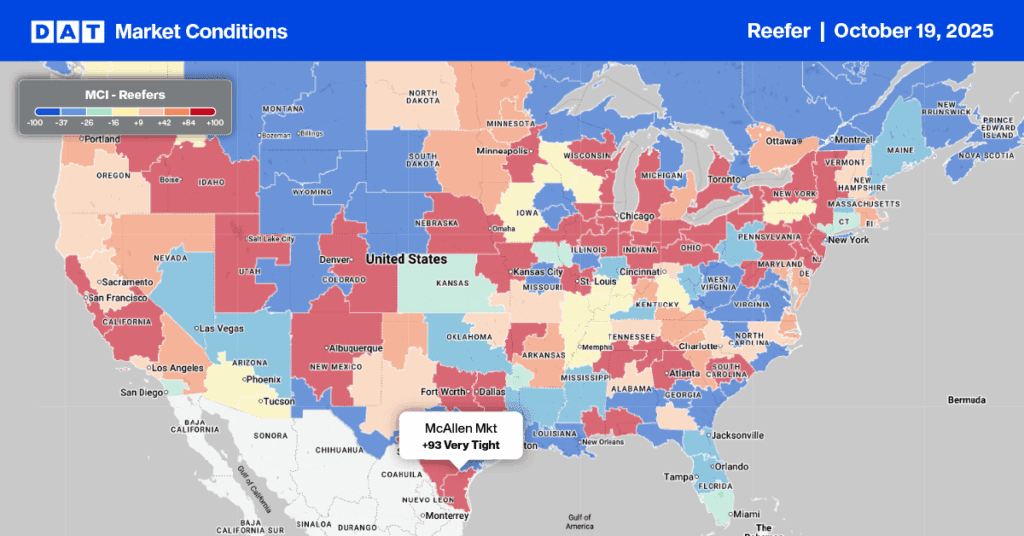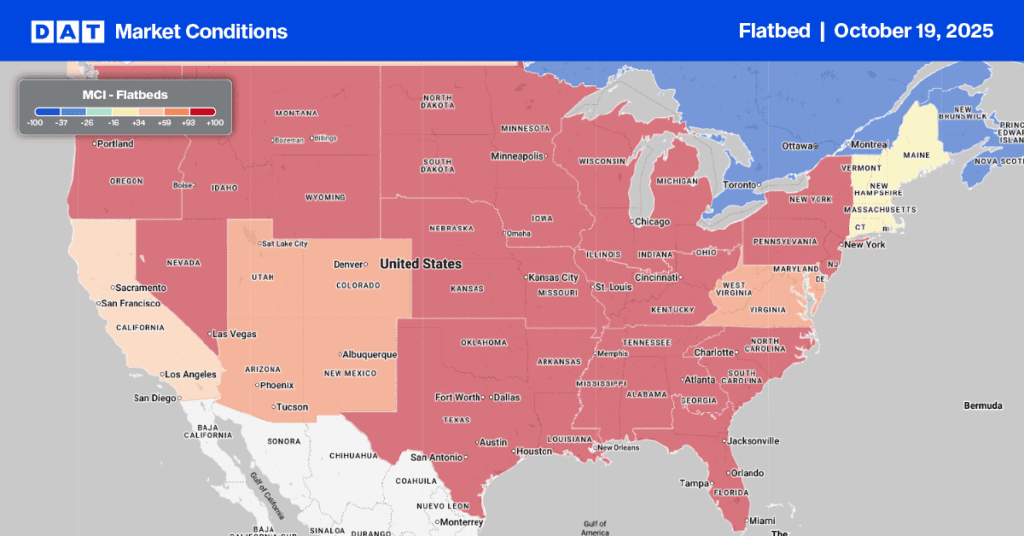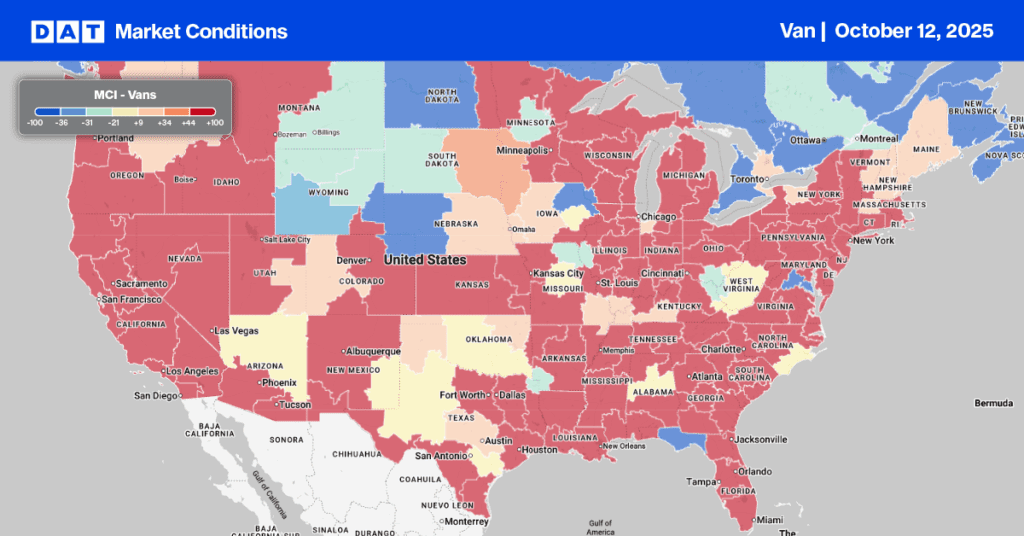Although volumes are starting to improve, it may not be enough to see reefer spot rates increase materially to the traditional July seasonal peak. According to the USDA, national weekly truckload volumes (domestic and imported) are down 22% y/y and the lowest since 2017. Imported produce volumes, including blueberries from Mexico, are down by 2% y/y, while total imports from Canada are up 31% y/y.
Even though U.S. blueberries are grown in 13 states, around 28% of consumer demand is met through imports from Mexico, Chile, and Peru over the winter, with the transition from imported to domestic strawberries peaking between April and August each year. Typically, around 46% of the annual volume is shipped during this five-month season.
Berries are generally in season from spring through summer, and some go into fall, with each state having a slightly different berry season. According to Kevin Schooley, executive director of the North American Strawberry Growers Association, “Besides the highly shippable berries from California and Florida, berries are a particularly regional product sold not far from where they’re grown. In many cases, the varieties grown from anywhere that’s not Florida or California are not of a post-harvest quality built for shipping long distances.”
According to data from the USDA, just over 37% of annual blueberry production comes from California, followed by the Pacific Northwest (25%) and Florida (8%), so the vast majority of blueberry production does indeed travel long distances to market.
Get the clearest, most accurate view of the truckload marketplace with data from DAT iQ.
Tune into DAT iQ Live, live on YouTube or LinkedIn, 10am ET every Tuesday.
The blueberry capital of the world comes alive
July is also peak harvest time for growers in Hammonton, NJ, the self-proclaimed “blueberry capital of the world,” where the harvest generally begins in early June and ends by late July. New Jersey growers accounted for just over 40% of monthly blueberry volume in May and June last year, followed by California (20%) and Mexico (30%). While carriers and brokers see substantial blueberry volumes in cross-border and port markets in winter, truckload carriers will move around 27,000 truckloads of blueberries nationally over the next few months, with New Jersey growers shipping around 23% of monthly volume or an average of 6,200 truckloads to national consumer markets.
Why are blueberries so popular in New Jersey?
According to the U.S Highbush Blueberry Council, New Jersey has approximately 10,149 acres of blueberries (bearing and nonbearing acres) and around 270 farms. This represents just over 9% of the total national blueberry acreage. According to Anthony DiMeo, a fourth-generation blueberry farmer at DiMeao Farms in Hammonton, blueberry farmers take pride in the area’s history. His great grandfather started his farm in 1916, emigrated from Italy in 1910, and began to plant blueberries in South Jersey on just 35 acres. Over a century later, they now grow up to 1,000 acres of blueberries every year.
“All of the blueberries that you see today, grown worldwide, started right here in the New Jersey Pine Barrens,” DiMeo said. “It has good drainage because it’s sandy soil, has a low pH, and has acidity. So, those are the three conditions that blueberry bushes like; that’s what makes this area unique for growing blueberries.”
To celebrate the short yet profitable season, in Hammonton, N.J., some 270 growers hold the annual Red, White & Blueberry Festival in conjunction with the local chamber of commerce. This year the festival is scheduled for June 26th with lots to celebrate – blueberry volumes are up 16.7% compared to last year.


